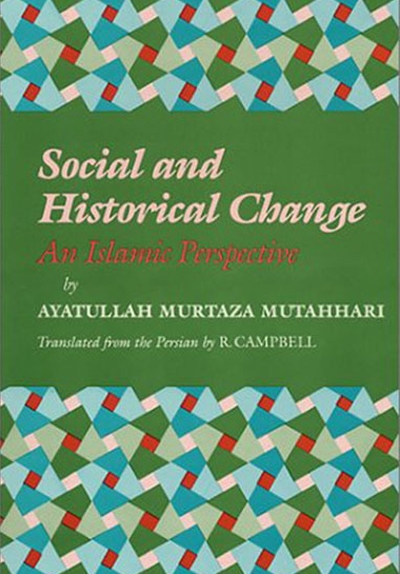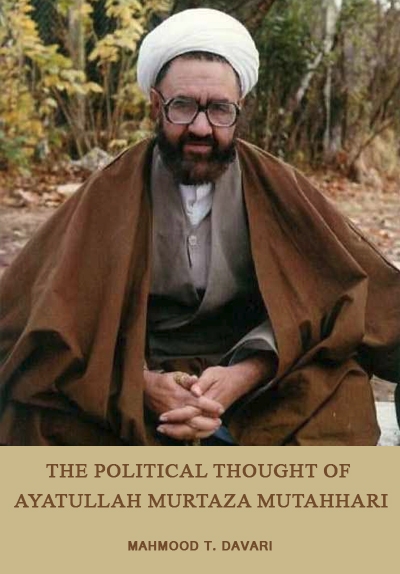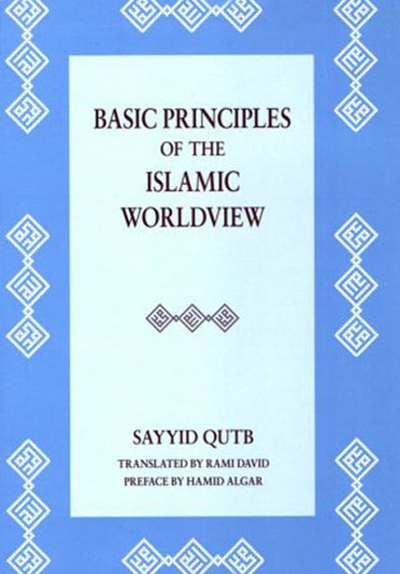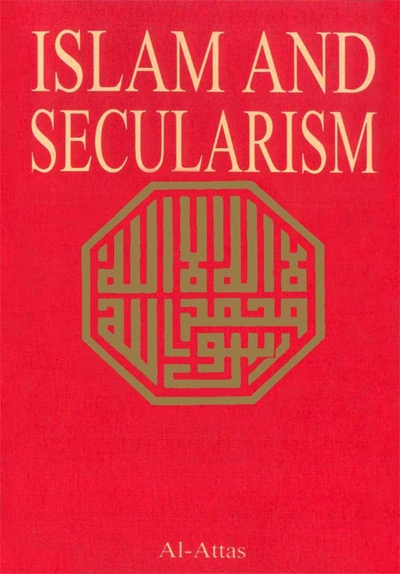Fundamentals of Islamic Thought: God, Man and the Universe
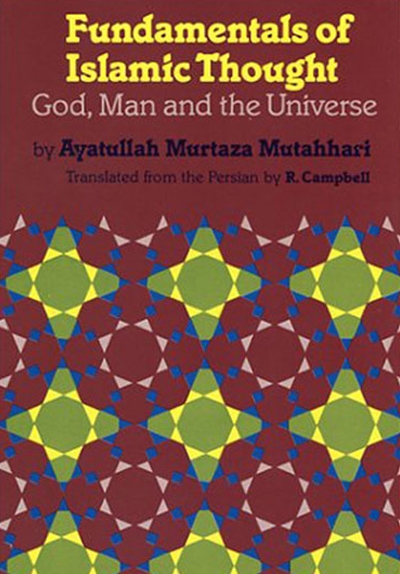
Author(s): Murtaza Mutahhari
Publisher: Mizan Press
Published on: Ramadan, 1405 1985-12
ISBN: 0-933782-14-4, 0-933782-15-2 (pbk.)
No. of Pages: 235
Introduction
by Hamid Algar
Ayatullah Murtaza Mutahhari, one of the principal architects of the new Islamic consciousness in Iran, was born on February 2,1920, in Fariman, then a village and now a township about sixty kilometers from Mashhad, the great center of Shi‘i pilgrimage and learning in Eastern Iran.1 His father was Muhammad Husayn Mutahhari, a scholar of some renown who studied in Najaf and spent several years in Egypt and the Hijaz before returning to Fariman. The elder Mutahhari was of a different caste of mind from his son, who in any event came to outshine him. The father was devoted to the works of the celebrated traditionalist, Mulla Muhammad Baqir Majlisi; whereas the son’s great hero among the Shi‘i scholars of the past was the theosophist Mulla Sadra. Nonetheless, Ayatullah Mutahhari always retained great respect and affection for his father, who was also his first teacher, and he dedicated to him one of his most popular books, Dastan-i Rastan (“The Epic of the Righteous”).2
At the exceptionally early age of twelve, Mutahhari began his formal religious studies at the teaching institution in Mashhad, which was then in a state of decline, partly because of internal reasons and partly because of the repressive measures directed by Riza Khan, the first Pahlavi autocrat, against all Islamic institutions. But in Mashhad, Mutahhari discovered his great love for philosophy, theology, and mysticism, a love that remained with him throughout his life and came to shape his entire outlook on religion:
I can remember that when I began my studies in Mashhad and was still engaged in learning elementary Arabic, the philosophers, mystics, and theologians impressed me far more than other scholars and scientists, such as inventors and explorers. Naturally I was not yet acquainted with their ideas, but I regarded them as heroes on the stage of thought.3
Accordingly, the figure in Mashhad who aroused the greatest devotion in Mutahhari was Mirza Mahdi Shahidi Razavi, a teacher of philosophy. But Razavi died in 1936, before Mutahhari was old enough to participate in his classes, and partly for this reason he left Mashhad the following year to join the growing number of students congregating at the teaching institution in Qum.
Thanks to the skillful stewardship of Shaykh ‘Abd al-Karim Ha’iri, Qum was on its way to becoming the spiritual and intellectual capital of Islamic Iran, and Mutahhari was able to benefit there from the instruction of a wide range of scholars. He studied fiqh and usul—the core subjects of the traditional curriculum—with Ayatullah Hujjat Kuhkamari, Ayatullah Sayyid Muhammad Damad, Sayyid Muhammad Riza Gulpayagani, and Hajj Sayyid Sadr al-Din Sadr. But more important than all these was Ayatullah Burujirdi, the successor of Ha’iri as director (za'im) of the teaching establishment in Qum. Mutahhari attended his lectures from his arrival in Qum in 1944 until his departure for Tehran in 1952, and he nourished a deep respect for him.4
Fervent devotion and close affinity characterized Mutahhari’s relationship with his prime mentor in Qum, Imam Ruhullah Khomeini. When Mutahhari arrived in Qum, the imam was a young lecturer (mudarris), but he was already marked out from his contemporaries by the profundity and comprehensiveness of his Islamic vision and his ability to convey it to others. These qualities were manifested in the celebrated lectures on ethics that he began giving in Qum in the early 1930s. The lectures attracted a wide audience from outside as well as inside the religious teaching institution and had a profound impact on all who attended them. Mutahhari made his first acquaintance with the imam at these lectures:
When I migrated to Qum, I found the object of my desire in a personality who possessed all the attributes of Mirza Mahdi (Shahidi Razavi) in addition to others that were peculiarly his own. I realized that the thirst of my spirit would be quenched at the pure spring of that personality. Although I had still not completed the preliminary stages of my studies and was not yet qualified to embark on the study of the rational sciences (ma'qulat), the lectures on ethics given by that beloved personality every Thursday and Friday—lectures that were not restricted to ethics in the dry, academic sense but dealt with gnosis and spiritual wayfaring— intoxicated me. I can say without exaggeration that those lectures aroused in me such ecstasy that their effect remained with me until the following Monday or Tuesday. An important part of my intellectual and spiritual personality took shape under the influence of those lectures and the other classes I took over a period of twelve years with that spiritual master (ustad-i ilahi).5
In about 1946, Imam Khomeini began lecturing to a small group of students that included both Mutahhari and his roommate at the Fayziya madrasa, Ayatullah Muntaziri, on two key philosophical texts, the Asfar al-Arba'a of Mulla Sadra and the Sharh-i Manzuma of Mulla Hadi Sabzavari. Mutahhari’s participation in this group, which continued to meet until about 1951, enabled him to establish more intimate links with the imam. Also in 1946, at the urging of Mutahhari and Muntaziri, the imam taught his first formal course on fiqh and usul, taking as his text the chapter on rational proofs from the second volume of Akhund Khurasani’s Kifayat al-Usul. Mutahhari followed his course assiduously, while still pursuing his studies of fiqh with Burujirdi.
In the first two postwar decades. Imam Khomeini trained numerous students in Qum who became leaders of the Islamic Revolution and the Islamic Republic, so that through them (as well as directly), the imprint of his personality is visible on all the key developments of the past decade. But none among his students bore to the imam the same relationship of affinity as Mutahhari, an affinity to which the imam himself has borne witness. Pupil and master shared a profound attachment to all aspects of traditional scholarship, without in any way being its captive; a comprehensive vision of Islam as a total system of life and belief, with particular importance ascribed to its philosophical and mystical aspects; an absolute loyalty to the religious institution, tempered by an awareness of the necessity of reform; a desire for comprehensive social and political change, accompanied by a great sense of strategy and timing; and an ability to reach out beyond the circle of the traditionally religious and gain the attention and loyalty of the secularly educated.
Finally among the teachers to whose influence Mutahhari was exposed in Qum, mention must be made of the great exegete of the Qur’an and philosopher, Ayatullah Sayyid Muhammad Husayn Tabataba’i. Mutahhari participated in both Tabataba’i’s classes on the Shifa’ of Avicenna from 1950 to 1953 and the Thursday evening meetings that took place under his direction. The subject of these meetings was materialist philosophy, a remarkable choice for a group of traditional scholars. Mutahhari himself had first conceived a critical interest in materialist philosophy, especially Marxism, soon after embarking on the formal study of the rational sciences. According to his own recollections, he began, in about 1946, to study the Persian translations of Marxist literature published by the Tudeh party, the major Marxist organization in Iran and at that time an important force on the political scene. In addition, he read the writings of Taqi Arani, the main theoretician of the Tudeh party, as well as Marxist publications in Arabic emanating from Egypt. At first he had some difficulty understanding these texts because he was not acquainted with modern philosophical terminology, but by dint of continued exertion (which included the drawing up of a synopsis of Georges Pulitzer’s Elementary Principles of Philosophy), he came to master the whole subject of materialist philosophy. This mastery made him an important contributor to Tabataba’i’s circle and later, after his move to Tehran, an effective combatant in the ideological war against Marxism and Marxist-influenced interpretations of Islam.
Numerous refutations of Marxism have been essayed in the Islamic world, both in Iran and elsewhere, but almost all of them fail to go beyond the obvious incompatibilities of Marxism with religious belief and the political failures and inconsistencies of Marxist political parties. Mutahhari, by contrast, went to the philosophical roots of the matter and demonstrated with rigorous logic the contradictory and arbitrarily hypothetic nature of key principles of Marxism. His polemical writings are characterized more by intellectual than rhetorical or emotional force.
However, for Mutahhari, philosophy was far more than a polemical tool or intellectual discipline; it was a particular style of religiosity, a way of understanding and formulating Islam. Mutahhari belongs, in fact, to the tradition of Shi‘i philosophical concern that goes back at least as far as Nasir ad-Din Tusi, one of Mutahhari’s personal heroes. To say that Mutahhari’s view of Islam was philosophical is not to imply that he lacked spirituality or was determined to subordinate revealed dogma to philosophical interpretation and to impose philosophical terminology on all domains of religious concern. It means rather that he viewed the attainment of knowledge and understanding as the prime goal and benefit of religion and for that reason assigned to philosophy a certain primacy among the disciplines cultivated in the religious institution. In this he was at variance with those numerous scholars for whom fiqh was the be-all and end-all of the curriculum, with modernists for whom philosophy represented a Hellenistic intrusion into the world of Islam, and with all those whom revolutionary ardor had made impatient with careful philosophical thought.6
The particular school of philosophy to which Mutahhari adhered was that of Mulla Sadra, the “sublime philosophy” (hikmat-i muta'aliya) that seeks to combine the methods of spiritual insight with those of philosophical deduction. Mutahhari was a man of tranquil and serene disposition, both in his general comportment and in his writings. Even when engaged in polemics, he was invariably courteous and usually refrained from emotive and ironical wording. But such was his devotion to Mulla Sadra that he would passionately defend him even against slight or incidental criticism, and he chose for his first grandchild—as well as for the publishing house in Qum that put out his books—the name of Sadra.
Insofar as Sadra’s school of philosophy attempts to merge the methods of inward illumination and intellectual reflection, it is not surprising that it has been subject to varying interpretations on the part of those more inclined to one method than the other.7 To judge from his writings, Mutahhari belonged to those for whom the intellectual dimension of Sadra’s school was predominant; there is little of the mystical or markedly spiritual tone found in other exponents of Sadra’s thought, perhaps because Mutahhari viewed his own inward experiences as irrelevant to the task of instruction in which he was engaged or even as an intimate secret he should conceal. More likely, however, this predilection for the strictly philosophical dimension of the “sublime philosophy” was an expression of Mutahhari’s own temperament and genius. In this respect, he differed profoundly from his great mentor. Imam Khomeini, many of whose political pronouncements continue to be suffused with the language and concerns of mysticism and spirituality.
In 1952, Mutahhari left Qum for Tehran, where he married the daughter of Ayatullah Ruhani and began teaching philosophy at the Madrasa-yi Marvi, one of the principal institutions of religious learning in the capital. This was not the beginning of his teaching career, for already in Qum he had begun to teach certain subjects —logic, philosophy, theology, and while still a student himself. But Mutahhari seems to have become progressively impatient with the somewhat restricted atmosphere of Qum, with the factionalism prevailing among some of the students and their teachers, and with their remoteness from the concerns of society. His own future prospects in Qum were also uncertain.
In Tehran, Mutahhari found a broader and more satisfying field of religious, educational, and ultimately political activity. In 1954, he was invited to teach philosophy at the Faculty of Theology and Islamic Sciences of Tehran University, where he taught for twenty two years. First the regularization of his appointment and then his promotion to professor were delayed by the jealousy of mediocre colleagues and by political considerations (for Mutahhari’s closeness to the imam was well known). But the presence of a figure such as Mutahhari in the secular university was significant and effective. Many men of madrasa background had come to teach in the universities, and they were often of great erudition. However, almost without exception they had discarded an Islamic worldview together with their turbans and cloaks. Mutahhari, by contrast, came to the university as an articulate and convinced exponent of Islamic science and wisdom, almost as an envoy of the religious institution to the secularly educated. Numerous people responded to him as the pedagogical powers he had first displayed in Qum now fully unfolded.
In addition to building his reputation as a popular and effective university lecturer, Mutahhari participated in the activities of the numerous professional Islamic associations (anjumanha) that had come into being under the supervision of Mahdi Bazargan and Ayatullah Taleghani, lecturing to their members—doctors, engineers, teachers—and helping to coordinate their work. A number of Mutahhari’s books consist, in fact, of the revised transcripts of series of lectures delivered to the Islamic associations.
Mutahhari’s wishes for a wider diffusion of religious knowledge in society and a more effective engagement of religious scholars in social affairs led him also, in 1960, to assume the leadership of a group of Tehran ‘ulama known as the Anjuman-i Mahana-yi Dini (“The Monthly Religious Society”). The members of this group, which included the late Ayatullah Bihishti, a fellow-student of Mutahhari in Qum, organized monthly public lectures designed simultaneously to demonstrate the relevance of Islam to contemporary concerns and to stimulate reformist thinking among the ‘ulama. The lectures were printed under the title of Guftar-i Mah (“Discourse of the Month”) and proved very popular, but the government banned them in March 1963 when Imam Khomeini began his public denunciation of the Pahlavi regime.
A far more important venture of the same kind was the foundation in 1965 of the Husayniya-yi Irshad, an institution in north Tehran designed to gain the allegiance of the secularly educated young to Islam. Mutahhari was among the members of the directing board; he also lectured at the Husayniya-yi Irshad and edited and contributed to several of its publications. The institution was able to draw huge crowds to its functions, but this success—which doubtless exceeded the hopes of the founders—was overshadowed by a number of internal problems. One such problem was the political context of the institution’s activities, which gave rise to differing opinions on the opportuneness of going beyond reformist lecturing to political confrontation. A related but more radical problem was presented by the existence within the Husayniya-yi Irshad of mutually antagonistic concepts and interpretations of Islam and its sociocultural mission. To express it more simply, there was the remarkable personality of ‘Ali Shari‘ati and the controversies he engendered.
The relationship between Mutahhari and Shari'ati is a delicate subject, fraught with political implications and complicated by the fact that both men are now dead and unable to clarify matters on their own behalves. Elements opposed to the Islamic Republic who claim to be the followers of Shari'ati and the protagonists of a “progressive Islam” suggest that some kind of absolute enmity opposed the two men and cast Mutahhari as the antithesis of their hero. Supporters of the new order in Iran tend, by contrast, to minimize the differences between these two key figures in the recent intellectual history of Iran; while distinctly preferring the work of Mutahhari to that of Shari'ati, they nonetheless wish to preserve for the Islamic Republic the capital that is represented by the lasting appeal of Shari‘ati.8
Any notion of personal bitterness or discordance between the two men should be dismissed. The only references to Mutahhari in Shari'ati’s work are friendly and respectful. It was Mutahhari who solicited from Shari'ati his contribution to Muhammad, Khatam-i Payambaran (“Muhammad, The Seal of the Messengers”), which was later published separately under the title Az Hijrat ta Vafat (“From Migration to Death”). Whenever Mutahhari criticizes, in his writings, theories that are unmistakably Shari'ati’s, he does so with courtesy and restraint and discreetly refrains from mention of Shari'ati’s name. The two men clearly shared important goals: the reorientation of educated youth to Islam and the transformation of Iranian society in accordance with an Islamic vision. Both died while struggling for this goal: Shari'ati exiled in England and Mutahhari assassinated in Tehran.
There were, however, profound differences of outlook between the two men. Mutahhari was deeply rooted in traditional learning and enamored of its exponents; Shari'ati’s acquaintance with the legacy of Islamic scholarship was superficial and lacking in reverence. Mutahhari was a systematic thinker who had fully absorbed a rigorous philosophical training; Shari'ati was impatient with philosophical and theological niceties and excelled in novel formulations that were more effective rhetorically and emotionally than intellectually. Mutahhari’s thought was of a piece and internally consistent; Shari'ati’s was a process of ceaseless exploration and revision. Both Mutahhari and Shari‘ati were acquainted with Western thought (the former, it appears, only through Arabic and Persian translations), and both sought to assert Islam’s superiority to it. But Mutahhari wielded against it the weapons of the Islamic philosophical tradition; whereas Shari'ati often used terminology and concepts borrowed from the enemy. Most significantly, perhaps, Mutahhari believed firmly in the guiding role of the religious scholars (while conscious of their need for reform); whereas on occasion Shari‘ati propounded the fateful thesis of an “Islam minus akhunds" and wished to award the leadership of society to the Muslim intellectual.
As a result of these differences, Mutahhari gradually withdrew from the work of the Husayniya-yi Irshad while continuing to lecture elsewhere and avoiding an open conflict with Shari'ati that would have split the developing Islamic movement and served the purposes of the Shah’s regime.9
The spoken word plays in general a more effective and immediate role in promoting revolutionary change than the written word, and it would be possible to compose an anthology of key sermons, addresses, and lectures that have carried the Islamic Revolution of Iran forward. But the clarification of the ideological content of the revolution and its demarcation from opposing or competing schools of thought have necessarily depended on the written word, on the composition of works that expound Islamic doctrine in systematic form, with particular attention to contemporary problems and concerns. In this area, Mutahhari’s contribution was unique in its volume and scope. Mutahhari wrote assiduously and continuously, from his student days in Qum down to 1979, the year of his martyrdom. Much of his output was marked by the same philosophical tone and emphases already noted, and he probably regarded as his most important work Usul-I Falsafa va Ravish-I Ri’alism (“The Principles of Philosophy and the Method of Realism”), the record of Tabataba’i’s discourses to the Thursday evening circle in Qum, supplemented with Mutahhari’s comments. But he chose the topics of his books in accordance not with personal interest or predilection, but with his perception of need; wherever a book was lacking on some vital topic of contemporary Islamic interest, Mutahhari sought to supply it. Singlehandedly, he set about constructing the main elements of a contemporary Islamic library. Books such as ‘Adl-i Ilahi (“Divine Justice” ), Nizam-i Huquq-i Zan dar Islam (“The System of Women’s Rights in Islam”), Mas ’ala-yi Hijab (“The Question of the Veil”), Ashna’i ba ‘Ulum-i Islami (“An Introduction to the Islamic Sciences”), and Muqaddima bar Jahanbini-yi Islami (“An Introduction to the Worldview of Islam”) were all intended to fill a need, to contribute to an accurate and systematic understanding of Islam and the problems of Islamic society.10
These books may well come to be regarded as Mutahhari’s most lasting and important contribution to the rebirth of Islamic Iran, but his activity also had a political dimension that, admittedly subordinate, should not be overlooked. While a student and fledgling teacher in Qum, he had sought to instill political consciousness in his contemporaries and was particularly close to those among them who were members of the Fida’iyan-i Islam, the militant organization founded in 1945 by Navvab Safavi. The Qum headquarters of the Fida’iyan was the Madrasa-yi Fayziya, where Mutahhari himself resided, and he sought in vain to prevent them from being removed from the madrasa by Burjirdi, who was resolutely set against all political confrontation with the Shah’s regime. During the struggle for the nationalization of the Iranian oil industry, Mutahhari sympathized with the efforts of Ayatullah Kashani and Dr. Muhammad Musaddiq, although he criticized the latter for his adherence to secular nationalism. After his move to Tehran, Mutahhari collaborated with the Freedom Movement of Bazargan and Taleghani but never became one of the leading figures in the group.
His first serious confrontation with the Shah’s regime came during the uprising of Khurdad 15,1342/June 6,1963, when he showed himself to be politically as well as intellectually a follower of Imam Khomeini by distributing the imam's declarations and urging support for him in the sermons he gave.11 He was accordingly arrested and held for forty-three days. After his release, he participated actively in the various organizations that came into being to maintain the momentum that had been created by the uprising, most importantly the Association of Militant Religious Scholars (Jami‘a-yi Ruhaniyat-i Mubariz). In November 1964, Imam Khomeini entered on his fourteen years of exile, spent first in Turkey and then in Najaf, and throughout this period Mutahhari remained in touch with the imam, both directly—by visits to Najaf—and indirectly. When the Islamic Revolution approached its triumphant climax in the winter of 1978 and the imam left Najaf for Paris, Mutahhari was among those who traveled to Paris to meet and consult with him. His closeness to the imam was confirmed by his appointment to the Council of the Islamic Revolution, the existence of which the imam announced on January 12, 1979.
Mutahhari’s services to the Islamic Revolution were brutally curtailed by his assassination on May 1, 1979. The murder was carried out by a group known as Furqan, which claimed to be the protagonists of a “progressive Islam,” one freed from the allegedly distorting influence of the religious scholars. Although Mutahhari appears to have been chairman of the Council of the Islamic Revolution at the time of his assassination, it was as a thinker and a writer that he was martyred.12
In 1972, Mutahhari had published a book entitled "Ilal-i Girayish ba Maddigari (“Reasons for the Turn to Materialism”), an important work analyzing the historical background of materialism in Europe and Iran. During the revolution, he wrote an introduction to the eighth edition of the book, attacking distortions of the thought of Hafiz and Hallaj that had become fashionable in some segments of Iranian society and refuting certain materialistic interpretations of the Qur’an. The source of the interpretations was the Furqan group, which sought to deny fundamental Qur’anic concepts such as the divine transcendence and the reality of the hereafter. As always in such cases, Mutahhari’s tone was persuasive and solicitous, not angry or condemnatory, and he even invited a response from Furqan or other interested parties to what he had written. Their only response was the gun.
The threat to assassinate all who opposed them was already contained in the publications of Furqan, and after the publication of the new edition of ‘Ilal-i Girayish ba Maddigari, Mutahhari apparently had some premonition of his martyrdom. According to the testimony of his son, Mujtaba, a kind of detachment from worldly concerns became visible in him; he augmented his nightly prayers and readings of the Qur’an, and he once dreamed that he was in the presence of the Prophet, together with Imam Khomeini.
On Tuesday, May 1, 1979, Mutahhari went to the house of Dr.Yadullah Sahabi, in the company of other members of the Council of the Islamic Revolution. At about 10:30 at night, he and another participant in the meeting, Engineer Katira’i, left Sahabi’s house. Walking by himself to an adjacent alley where the car that was to take him home was parked, Mutahhari suddenly heard an unknown voice call out to him. He looked around to see where the voice was coming from, and as he did so, a bullet struck him in the head, entering beneath the right earlobe and exiting above the left eyebrow. He died almost immediately, and although he was rushed to a nearby hospital, there was nothing left to be done but to mourn.13 The body was left in the hospital the following day, and on Thursday, amid widespread mourning, it was taken for funeral prayers first to Tehran University and then to Qum for burial, next to the grave of Shaykh ‘Abd al-Karim Ha’iri.
Imam Khomeini wept openly when Mutahhari was buried in Qum, and he described him as his “dear son,” as “the fruit of my life,” as “a part of my flesh.” But in his eulogy the imam also pointed out that with the murder of Mutahhari neither was his personality diminished nor the course of the revolution interrupted:
Let the evil-wishers know that with the departure of Mutahhari, his Islamic personality, his philosophy and learning, have not left us. Assassinations cannot destroy the Islamic personality of the great men of Islam.. . . Islam grows through sacrifice and the martyrdom of its cherished ones. From the time of its revelation down to the present, Islam has always been accompanied by martyrdom and heroism.14
The personage and legacy of Ayatullah Mutahhari have certainly remained unforgotten in the Islamic Republic, to such a degree that his posthumous presence has been almost as impressive as the attainments of his life. The anniversary of his martyrdom is regularly commemorated, and his portrait is ubiquitous throughout Iran. Many of his unpublished writings are being printed for the first time, and the whole corpus of his work is now being distributed and studied on a massive scale. In the words of Ayatullah Khamenei, president of the republic, the works of Mutahhari have come to constitute “the intellectual infrastructure of the Islamic Republic.” Efforts are accordingly under way to promote a knowledge of Mutahhari’s writings outside the Persian-speaking world, and the Ministry of Islamic Guidance has sponsored translations of his works into languages as diverse as Spanish and Malay.
In a sense, however, it will be the most fitting memorial to Mutahhari if revolutionary Iran proves able to construct a polity, society, economy and culture that are authentically and integrally Islamic. For Mutahhari’s life was oriented to a goal that transcended individual motivation and his martyrdom was the final expression of that effacement of self.
—Hamid Algar
Notes to the Introduction
- This sketch of the life and work of Ayatullah Mutahhari is based chiefly on Muhammad Va'izzada Khurasani, “ Sayri dar Zindagi-yi ‘Ilmi va Inqilabi-yi Ustad-i Shahid Murtaza Mutahhari,” in Yadnama-yi Ustad-i Shahid Murtaza Mutahhari, ed. ‘ Abd al-Karim Surush, Tehran, 1360 Sh./1981, pp. 319-380, an article rich in information on many aspects of the recent history of Islamic Iran. Reference has also been made to Mujtaba Mutahhari, “Zindagi-yi Pidaram,” in Harakat (journal of the students at the Tehran Faculty of Theology), no. 1 (n.d.), pp. 5-16; M. Hoda, In Memory of Martyr Mutahhari, a pamphlet published by the Ministry of Islamic Guidance, Tehran, April, 1982; and Ayatullah Mutahhari’s autobiographical introduction to the eighth edition of 'Ilal-i Girayish ba Maddigari, Qum, 1357 Sh./1978, pp. 7ff.
- Dastan-I Rastan, first published in 1339 Sh./1960, was chosen as book of the year by the Iranian National Commission for UNESCO in 1965.
- ‘Ilal-i Girayish ba Maddigari, p. 8.
- See Mutahhari’s article, “Mazaya va Khadamat-i Marhum Ayatullah Burujirdi,” in Bahsi dar bara-yi Marja’iyat va Ruhaniyat, 2nd. ed., Tehran, n.d., pp. 233-249.
- ‘Ilal-i Girayish ba Maddigari, p. 9.
- The authoritative statement of this view was made by Sayyid Qutb in his Khasa’is al-Tasawwur al-Islam ilaa Muqawwimatuhu, Cairo, numerous editions, which was translated into Persian and had some influence on views toward philosophy.
- See the remarks of William Morris in the introduction to his translation of Sadra’s Wisdom of the Throne, Princeton, 1982.
- The approved designation in Iran for Mutahhari is now ustad-i shahid (“the martyred master” ) and that for Shari‘ati mu'allim-i shahid (“the martyred teacher”).
- It is also said that Mutahhari was critical of Shari'ati’s tendencies to give the activities of the Husayniya-yi Irshad a prematurely revolutionary aspect. See Shahrough Akhavi, Religion and Politics in Contemporary Iran, Albany, NY, 1980, p. 144, quoting an interview with Mutahhari in October 1975.
- For a complete bibliography of Mutahhari’s writings, published and unpublished, see anon., “Fihrist-i Asar-i Ustad-i Shahid Murtaza Mutahhari,” in Yadnama-yi Ustad-i Shahid Murtaza Mutahhari, pp. 435-552.
- Mutahhari’s name comes ninth in a list of clerical detainees prepared by the military prosecutor’s office in June, 1963. See facsimile of the list in Dihnavi, Qiyam-i Khunin-i 15 Khurdad 42 ba Rivayat-i Asnad, Tehran, 1360 Sh./1981, p. 77.
- See Sayyid Husayn Ta’ib, Tahlili az Tirur-i Mutafakkir-i Shahid Ustad Mutahhari, Tehran, n.d., p. 1.
- Details taken from Mujtaba Mutahhari, “Zindagi-yi Pidaram,” pp.15-16.
- Text of the Imam’s eulogy in Yadnana-yi Ustad-i Shahid Murtaza Mutahhari, pp. 3-5.
